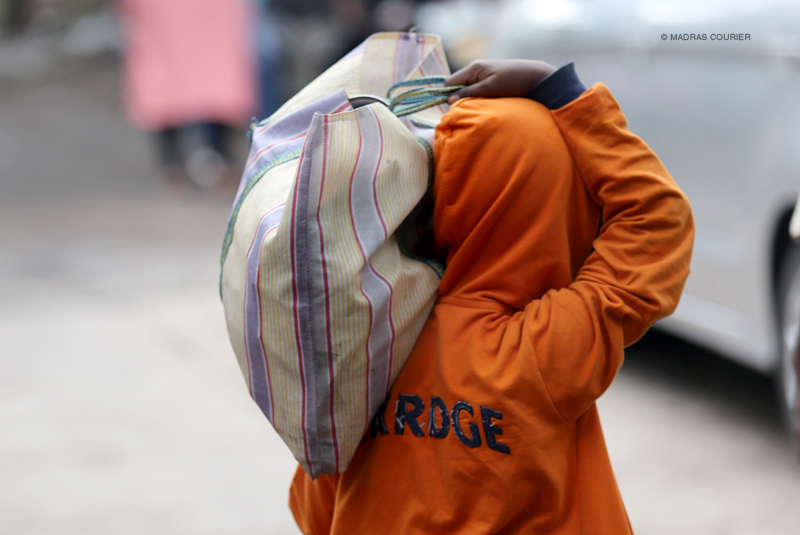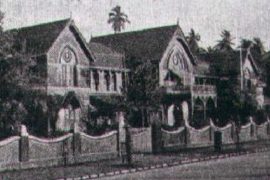A few years ago, members of the CNN Freedom Project visited Sidlaghatta, a silk hub sixty-five kilometres northeast of Bangalore, Karnataka. They met Hadia and her daughter Naseeba, who narrated a painful backstory of India’s sericulture industry.
Hadia and Naseeba were forced to work more than eleven hours a day for two hundred rupees to settle a loan of one lakh rupees. Unfortunately, by that time, the loan had doubled due to usurious rate of interest. By then, Naseeba had been working in a silk factory for three years, and her mother had been working for nine years; boiling silkworm cocoons and extracting threads (from which silk is created) had caused nasty injuries on their hands. However, some sections of the ‘right-wing press’ presented Hadia and Naseeba as ‘silk entrepreneurs’—ostensibly they were ‘empowered women’ who were key players in India’s sericulture industry.
According to the International Sericulture Commission, India is the second-largest silk producer in the world after China. In India and across the globe, silk is synonymous with luxury; sarees, curtains, bedsheets and pyjamas, made in silk, command a super premium. However, the process of silk production comes at a terrible cost.
Around 3,000 silkworms are boiled to death to produce just half a kilo of silk. It translates to the death of 1.2 trillion silkworms every year, which is 173 silkworms for every person on the face of this earth. Even the ethical way of producing silk has inconsistencies. Silk is also a less sustainable fabric.
The CNN report revealed how the industry is not just exploitative of the environment but also the people in the community. However, a right-wing magazine accuses the CNN Freedom Project of failing to recognise that the case of Naseeba and Hadia is at odds with the industry culture; they argue that even if a few employers engage in unjust practices, the industry does not become a ‘criminal enterprise trading in human life.’
Human Rights Watch reported modern-day child slavery in India’s Silk Industry. The report confirms bonded labour in Karnataka, where the CNN documentary was filmed. Bonded to their employers in exchange for a loan to their families, children work more than twelve hours a day, seven days a week. They can’t leave because their families are in debt; with their meagre wages, they may never be able to get free from that debt.
Their report documents testimonies of young children. Yeramma S., an eleven-year-old, had been bonded to his employer since the age of seven. She works at Karnataka’s silk production house for 1,700 rupees per annum. Her testimony reads:
At 4:00 a.m. I got up and did silk winding….I only went home once a week. I slept in the factory with two or three other children. We prepared the food there and slept in the space between the machines. The owner provided the rice and cut it from our wages. He would deduct the price. We cooked the rice ourselves. We worked twelve hours a day with one hour for rest. If I made a mistake-if I cut the thread-he would beat me. Sometimes [the owner] used vulgar language. Then he would give me more work.”
Human Rights Watch (HRW) interviewed many children, employers, government officials, and NGOs in three states—Karnataka, Uttar Pradesh, and Tamil Nadu—that form the core of India’s silk industry. They found that children as young as five were working through this exploitative system; the majority of children who worked as bonded labourers were Dalits—being at the bottom of the social ladder, they were often rendered helpless.
Producing silk threads demands delicate handling of the worms and often proves to be harmful to the workers’ health. Reelers’ hands get blistered, and infected from touching dead worms and hot water. Children who were forced to sit in damp, dingy chambers to assist weavers had injuries from sharp needles.
Children interviewed by Human Rights Watch often reported physical and verbal abuse by their employers. Just like Yeramma S., a nine-year-old, P. Ningamadiah told the HRW that his supervisor abused him by tying him to the wall with a chain and beating him with a belt.
The report confirmed treatment similar to Naseeba and Hadia. However, Muslim girls who do not go to factories (but work at private homes) become less visible and remain outside the protection of National child labour laws. In addition to low income, exploitive work, and lack of education, they are abused by their ‘masters.’ In many cases, they were sexually abused.
“The master came, and he said to my mother, if you will not repay the money, then we’ll have a rich man, and you will have to go and sleep with that man,” Naseeba had said in her interview with CNN. “I’m afraid of the owner, because he has given us (a) home to live in… Where should we go? We cannot go anywhere. We don’t know what he will do with us after (sees) this video.”
Child labour is illegal under Indian and international law. The ILO expressly lists bonded child labour as one of the ‘worst forms of exploitation.’ India made bonded labour illegal in 1976. However, the practice persists.
According to a Global Slavery Index study, over eleven million Indians are held in financial bondage. Bonded labourers are eligible for government assistance. However, many of them may be reluctant to come forward due to societal pressure and intimidation.
-30-
Copyright©Madras Courier, All Rights Reserved. You may share using our article tools. Please don't cut articles from madrascourier.com and redistribute by email, post to the web, mobile phone or social media.Please send in your feed back and comments to [email protected]











